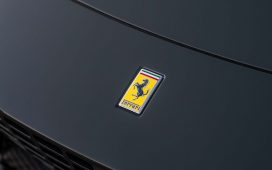Unlock the Editor’s Digest for free
Roula Khalaf, Editor of the FT, selects her favourite stories in this weekly newsletter.
Losses at Aston Martin ballooned by almost 90 per cent in the first three months of the year, as the British carmaker was hit by a two-thirds decline in sport utility vehicle sales and higher costs from refinancing its debt.
The company reported pre-tax losses of £138.8mn in its first quarter on Wednesday, compared with £74.2mn a year earlier, while revenues fell 10 per cent to £267.7mn. It shipped 945 cars over the period, down by more than a quarter year on year, as it wound down production on certain models ahead of bringing out new cars later in the year.
Aston Martin has been hamstrung by high debt, which the luxury-car maker has vowed to pay down when it begins generating meaningful levels of cash. In March it refinanced £1.15bn of debt, which will reduce its borrowing costs in the future, but falling cash levels saw overall net debt climb to more than £1bn at the end of the month, compared with £868mn a year ago.
Shares fell 8 per cent in early trading on Wednesday.
The company spent £80mn on financing expenses in the first three months of the year, related to changes in the US dollar exchange rate and fees from paying back some of the refinanced debt early.
During the three months, it had a cash outflow of £190.4mn, compared with £118.3mn a year before, partly due to a £42.6mn cash net interest payment.
The amount of cash Aston can access has fallen to just over £395mn from just under £461mn a year ago, which includes the company more than tripling its revolving credit facility to £165.6mn.
“This new facility provides the company with additional liquidity as it continues to accelerate its growth strategy,” Aston said on Wednesday.
The company had previously flagged that it expected a weaker start to the year but anticipated that a wave of new car launches would help drive sales and profitability in the second half.
The figures, which are worse than expected, demonstrate the scale of the challenge facing Aston’s incoming chief executive, Adrian Hallmark, who has been poached from Volkswagen’s Bentley and will start later this year.
Philippe Houchois, an automotive analyst at Jefferies, said the company was going through a “painful transition”, with a similar performance expected in the coming quarter as well.
Barclays analyst Henning Cosman said the business required “a fairly extreme hockey stick” in the second half of the year to hit its targets.
Under chair Lawrence Stroll, Aston has been trying to realign supply with demand — something that is essential to luxury businesses — and investing in a new wave of models.
Stroll said the company was going through an “immense product transformation”, with four new cars coming out this year, that is “expected to drive strong financial delivery and positive free cash flow generation in the second half of the year and beyond”.
The 63 per cent drop in its SUV sales come ahead of a revamped version of its DBX model, which will have a new interior and infotainment system, and goes into production later this quarter.
On Wednesday the company, which previously pushed back the expected launch date for an electric car, announced it would release a new V12 engine to power an upcoming high-end GT car.





